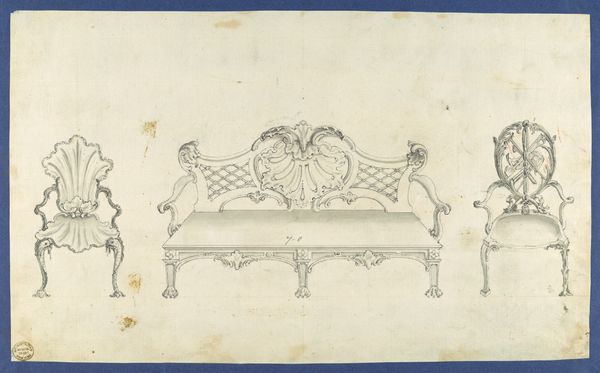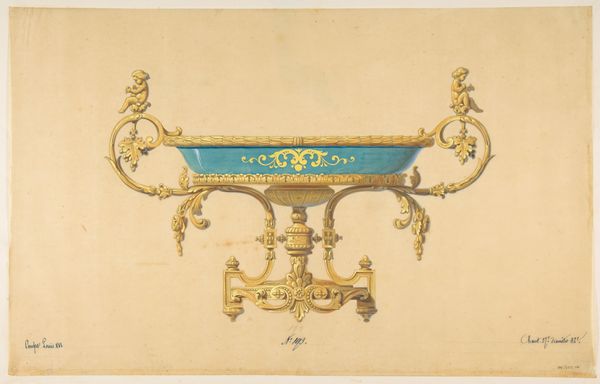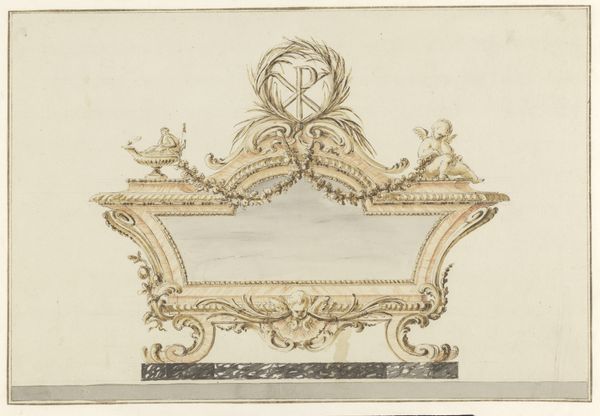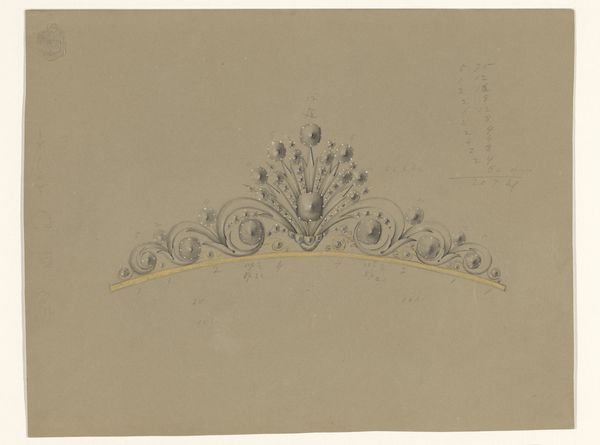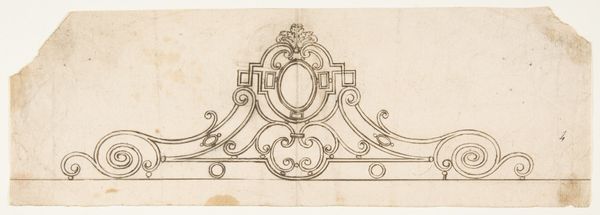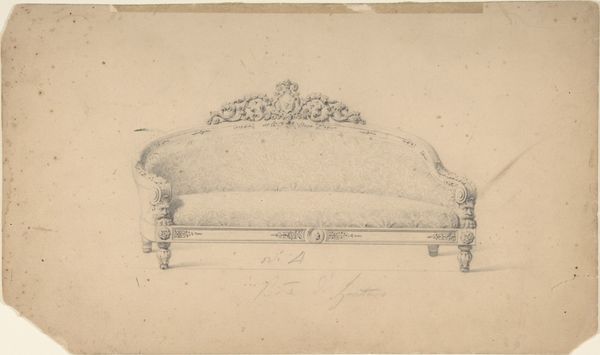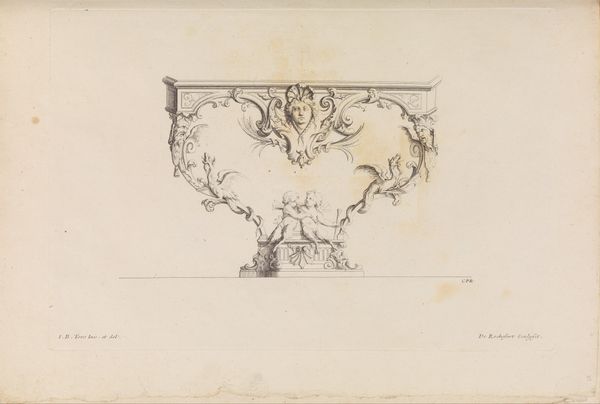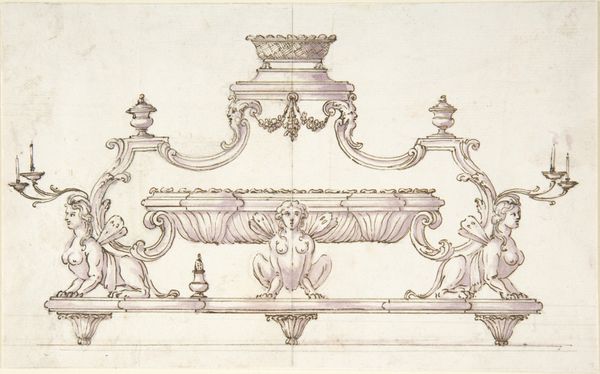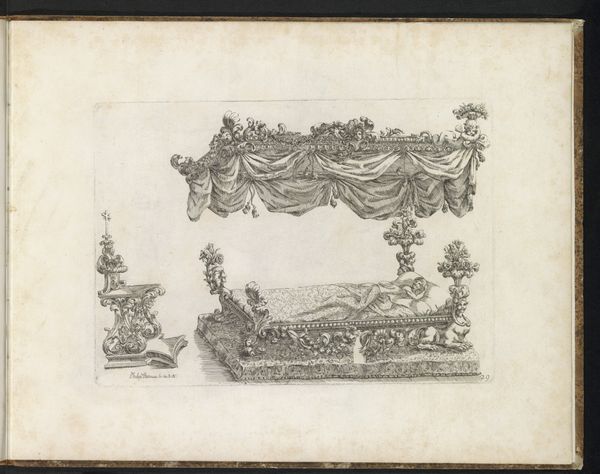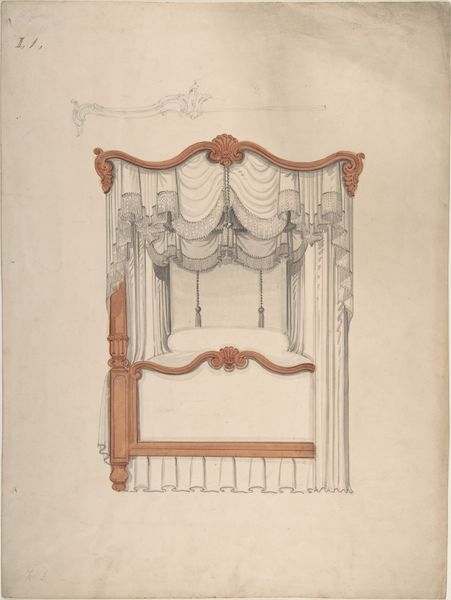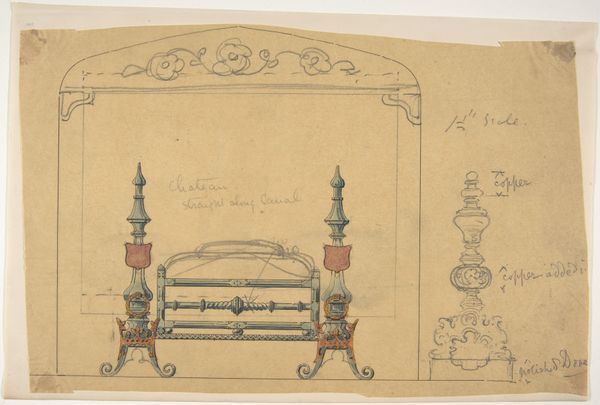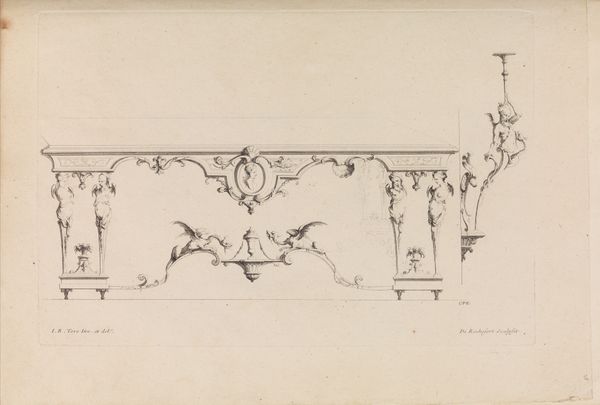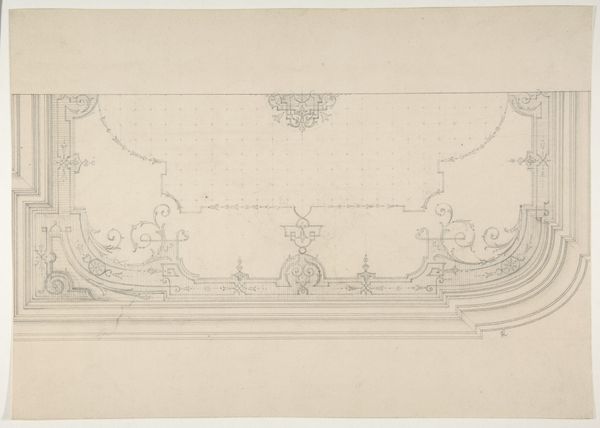
Dimensions: overall: 22.9 x 29.1 cm (9 x 11 7/16 in.) Original IAD Object: 23"x66"
Copyright: National Gallery of Art: CC0 1.0
Editor: Here we have Gilbert Sackerman's "Mirror," created around 1937 using watercolor and colored pencil. The gold frame is so ornate! It almost overwhelms the reflective surface. What first strikes you when you look at it? Curator: The frame is indeed assertive. I'm immediately drawn to its theatricality. The mirror itself becomes secondary, almost a stage prop. Look closely – what does that gilded frame evoke for you? Editor: I guess it reminds me of Baroque designs, but maybe a more streamlined version? It feels like the artist is referencing something, but not copying it exactly. Curator: Precisely. The artist is drawing upon a rich visual vocabulary. Consider the Baroque period. What was its emphasis? Think of the drama, the opulence... How might Sackerman be engaging with those ideas? Editor: Maybe by hinting at that extravagance, but simplifying it in a way that feels more modern? Like, keeping the idea of luxury but making it less heavy? Curator: Exactly. The mirror traditionally symbolizes reflection, self-awareness. But here, the frame steals the show, doesn't it? Perhaps Sackerman is commenting on how easily surface appearances can overshadow genuine introspection. It also makes me think about aspiration. Does the elaborate frame suggest the viewer’s desires and social climbing? Editor: I hadn't thought about it that way, but I see what you mean. It's like the mirror is less about seeing yourself and more about seeing what you want to be. It’s clever. Curator: Visual symbols speak volumes when we actively analyze them. Thank you. Editor: Thanks, I appreciate your reading of the cultural context!
Comments
No comments
Be the first to comment and join the conversation on the ultimate creative platform.
